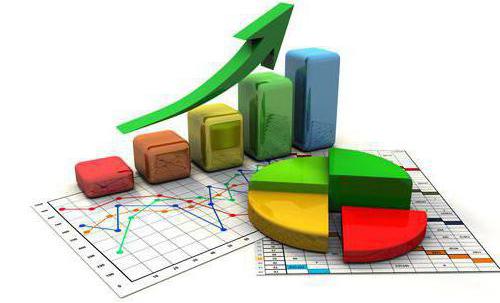Revolving funds - a maneuverable and renewable component of the material assets of the enterprise.
Definition of a concept
Revolving funds - this is the value of all funds of the enterprise, which are listed as inventories or already put into the production process. A sufficient number and optimal value structure of this category is one of the main conditions for the successful and effective activity of any organization.
An important point is that revolving funds are that part of the funds that directly takes part in production. Moreover, they completely or partially change their material form. It is necessary to clearly separate the resources that provide a continuous production process (for example, electricity), and those that are directly part of the finished product (raw materials).
It is worth noting that revolving funds are an important component not only of the economy of an individual enterprise, but also of the state as a whole. It is important that this category includes not only resources and materials, but also financial assets and intangible assets (permits, rights, and so on).

Revolving production assets
Some tools are used to directly service the product manufacturing process. They have a specific name - revolving production assets. Their feature is that they are completely spent and transfer their value to the finished product. In addition, this figure may increase significantly due to the fact that certain products are processed and completely change their shape.
To OPF include raw materials, tools that are used no longer than during one production cycle, as well as semi-finished products, work in progress and stocks. Another integral component is future spending, which represent a certain margin of safety associated with the need to update equipment, purchase materials, and so on.
In order to effectively manage the OPF, it is necessary to carry out the following organizational measures:
- clearly define the composition of funds and their structure in numerical terms;
- identify needs for missing funds;
- identification of priority sources from which revolving funds will regularly come into production;
- rational use of funds (the complete elimination of cost overruns or shortages).
Revolving funds of the enterprise
A mandatory element of any production is certain resources that make up the cost of production. Their monetary value represents the working capital of the enterprise. For the organization to function properly, you must always have the necessary supply of these resources. Nevertheless, any production seeks to save these funds, which can significantly reduce costs, and therefore increase profits. However, this should not be detrimental to quality.
The composition of revolving funds includes the following structural elements:
- reserves - these are certain resources that are designed and prepared for introduction into the production process (this includes materials, raw materials, semi-finished products, and spare parts, and energy resources, etc.);
- work in progress - these are certain elements that are already running in the workflow, but have not yet reached the state of the finished product (this also includes its own semi-finished products intended for internal use);
- deferred expenses - this is the amount of funds included in the price of the product, but related to future developments and projects (they do not have a tangible form).
The difference between fixed and revolving funds
Production assets in an enterprise are defined as the sum of the value of fixed assets as well as working capital. These categories have fundamental differences, which lie not only in the method, but also in the time of use.
Fixed and circulating assets differ from each other primarily in the duration of use. So, OBF completely change their material form. They cannot be used for longer than one production cycle (only some tools may be an exception). Speaking about PF, it is worth noting that they are used for a long time. It can be buildings, structures, equipment, machinery, etc. that is of high cost and takes part in a number of production cycles.
Fixed and circulating assets also differ in how they transfer their value to the product. So, the former involve a gradual depreciation charge, the amount of which is later spent on reconstruction or renewal. The cost of working capital is immediately included in the cost of finished goods.
It is also worth noting the fact that production assets, which are basic, do not change their shape. Depreciation and deterioration of them cannot be assigned to this category. But working capital changes completely: fuel is converted into energy, raw materials into finished products, and so on.

Rational use of working capital
One of the main tasks of any enterprise is to reduce the cost of the finished product, which is achieved when the use of working capital will be rational. This can be expressed in the following key points:
- significant savings in raw materials and materials makes it possible to reduce production costs or increase the number of products;
- reduction of raw material costs can also be achieved through the use of innovative materials, which allows to improve the characteristics and improve the quality of products;
- on the way to saving working capital, a decision can be made to streamline the production process and introduce new technologies that will significantly reduce the consumption of materials;
- working capital savings are inextricably linked with labor savings, which will improve the structure and quantitative composition of the enterprise’s workers;
- reducing the share of working capital in the cost of production, it becomes possible to devote more attention and resources to the technological component, which significantly increases the quality and final price of the product;
- if the enterprise does not have ambitions regarding expansion of production scale or updating of the technological component, then working capital savings can help to improve the economic situation, as well as overcome the crisis.

Main factors
The indicators of working capital reflect, firstly, the amount of resources expended, and secondly, their usefulness. Speaking about the first data, it is worth highlighting the following main values:
- The expense of working capital is calculated as the sum of all material resources involved in the production in monetary terms (can be determined both for individual types of products and for the entire program).
- Material consumption allows us to estimate how many resources in physical or monetary terms were used to produce one unit of goods (it is necessary to divide the total expenditure by the number of products received for a particular item). This is true when it comes to piece goods. Otherwise, the material consumption per physical unit is calculated (kilogram, liter, ton, and so on).
If current assets require preliminary processing before launching into production, then the following indicators are used to evaluate them:
- the balance of the useful substance after the primary processing of raw materials;
- percentage of losses (meaning the ratio of the useful component and waste);
- yield - is determined by the ratio of the number of suitable products to the initial volume of raw materials before processing.
A fairly important indicator that characterizes working capital is their turnover. This is the speed of their movement in the enterprise. The time of one revolution is equal to the full cycle, starting from the launch of raw materials into production to obtain the finished product. The higher this speed, the more effective is the organization of work at the enterprise.
Working capital turnover
The following main indicators are distinguished:
- The turnover Ratio - is calculated as the ratio of products sold to the balance of current assets in monetary terms for a certain period. It shows the number of full turns for the period, and is also considered commensurate with the rate of return on assets.
- Duration of turnover - is determined by dividing the length of the reporting period by the turnover ratio of working capital.
- The coefficient of consolidation - is an indicator inverse to the coefficient of turnover. It can be determined by dividing the remaining capital by the value of the output. It characterizes the amount of working capital that falls on each unit of the cost of production.
How to speed up turnover
It is possible to speed up the turnover of working capital by introducing a number of measures that are used at different stages of the production process. This can significantly reduce the consumption of materials, as well as more accurately organize their movement during operation.
Working capital funds include inventories, and therefore at the stage of their formation it is worth resorting to the following measures:
- the establishment of economically sound standards for the formation of raw materials;
- selection of suppliers with the most advantageous geographical location, which will reduce the time and cost of deliveries;
- development of a system for automating the loading of materials into the warehouse, as well as their delivery to production.
If we are talking about work in progress, then the following decisions will be appropriate:
- introduction of new advanced production technologies;
- development of standard processes and templates;
- motivation and material incentives of workers in the workshop for the economical and rational use of raw materials.
Product sales require the implementation of the following necessary measures:
- Search for distribution channels that provide the shortest route from supplier to buyer;
- direct contacts with the end consumer, bypassing intermediaries (for example, own sales networks).

What is included
Revolving funds include inventories, the structure of which can be described as follows:
- raw materials;
- semi-finished products and product units purchased from third-party suppliers;
- fuel resources;
- packaging materials and containers;
- spare parts for maintenance of equipment and production lines;
- cheap tools and items that wear out in less than a calendar year.
Speaking of work in progress, it is worth noting that these can be materials, semi-finished products and other stocks that are released into the production process, but have not yet reached the state of the finished product.
Deferred expenses have no material or material expression. Despite the fact that they are being implemented at the moment, the effect of them will come only in the future period. So, this category should include:
- development and development of new technologies, as well as product design;
- advance payment of ordered materials, as well as subscription to print media, advance payments for communication services, etc.
- rent for premises or equipment;
- advance tax and other mandatory payments.
Also at enterprises, one can distinguish such a category as circulation funds. It:
- finished products that are stored in a warehouse and have not yet been shipped for shipment to the consumer;
- products sent to the buyer for which payment has not yet been received in the enterprise’s accounts
- funds at the cash desk or on the account of the organization, which are intended to pay for services or materials supplied;
- receivables.

Current assets and funds
Revolving funds and working capital are often identified, however, this is not the same thing. So, the former are part of the enterprise’s resources, which are completely exhausted during one production cycle. If we talk about a category such as working capital, it is worth noting that they represent the totality of the first category, as well as the available circulation funds.
Rationing of working capital
Rationing of working capital is carried out with the aim of saving them, as well as rationalizing the production process. It includes four consecutive stages:
- At the preparatory stage, complete information is collected about the production process and material costs. We also study the status of stocks and the cost of each type of material.
- The organizational stage involves the development and planning of activities that are designed to make the use of working capital more rational.
- The next step is the economically sound calculation of standards. It is produced both for individual types of materials, and for each type of production.
- At the final stage, information about the decisions taken and established standards is transmitted to the heads of all departments of the enterprise.

Rationing of working capital is carried out using a number of fundamental principles, among which are the following:
- saving of raw materials and materials should not be made to the detriment of the production process, as well as timely settlements with suppliers and customers of products (also do not forget about the quality of finished goods, which should not suffer from a decrease in the amount of materials used);
- in determining the standards, the schedules for the supply of materials, as well as their possible losses associated with the imperfection of the production process should be taken into account (the warehouse should always have a certain margin in excess of norms that will ensure work in case of interruptions in raw materials);
- the establishment of norms and standards regarding the use of inventories should be accompanied by the improvement of technology (so that materials are spent more economically, it is worth resorting to the installation of new equipment that minimizes the unauthorized consumption of raw materials);
- the company should develop a system of employee liability for non-compliance with standards and cost overruns (violation of the rules must be accompanied by the collection of fines).
Revolving funds - this is one of the main elements of production, on which the effective operation of the enterprise depends.








